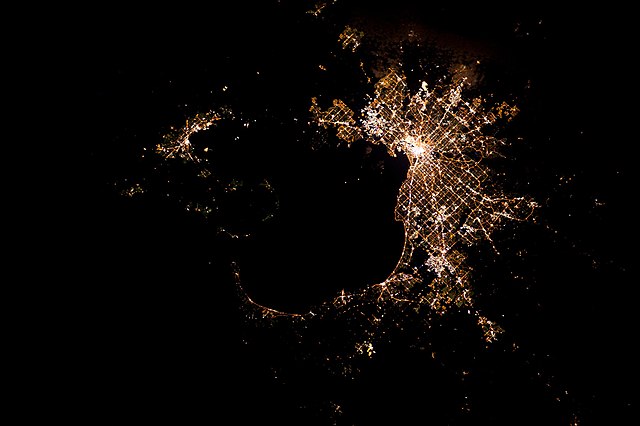A metropolitan area or metro is a region consisting of a densely populated urban agglomeration and its surrounding territories sharing industries, commercial areas, transport network, infrastructures and housing. A metropolitan area usually comprises multiple principal cities, jurisdictions and municipalities: neighborhoods, townships, boroughs, cities, towns, exurbs, suburbs, counties, districts and even states and nations in areas like the eurodistricts. As social, economic and political institutions have changed, metropolitan areas have become key economic and political regions.
Satellite image of the New York metropolitan area, the largest metropolitan area in the United States and one of the largest in the world, with Long Island in the east and Manhattan at the center of the densest part of the image
Greater São Paulo in Brazil seen at night from the International Space Station
The Melbourne metropolitan area in Australia seen at night from the International Space Station
The Downtown Dubai Metropolis
An urban area, built-up area or urban agglomeration is a human settlement with a high population density and an infrastructure of built environment. This is the core of a metropolitan statistical area in the United States, if it contains a population of more than 50,000.
Greater Tokyo in Japan, the world's most populated urban area, with about 40 million inhabitants as of 2022
Greater São Paulo at night, as seen from the International Space Station
Greater Melbourne at night, as seen from the International Space Station
Panoramic view of Pudong's skyline from the Bund in Shanghai






